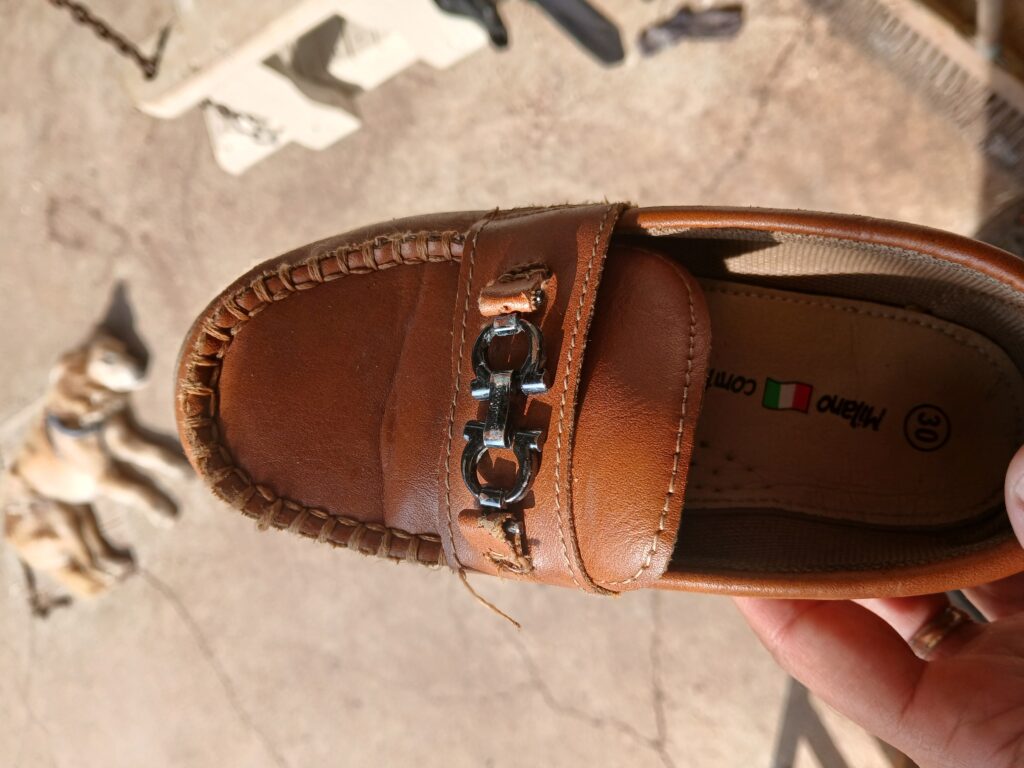I was sitting at my sewing machine working through a pile of pants to be repaired, when my daughter-in-law noticed what I was doing. She asked me if I could hem a skirt of hers, and I agreed, so she gave it to me. It wasn’t a major repair, it just needed a couple of minutes to sew and it was as good as new.
At the same time, a friend of my son came in and seeing what I was doing, asked me if I could fix his pants. Yes, I could, so he brought them to me and I repaired them as well.
It’s inconvenient and expensive to have your clothing repaired by someone else so most people will give or throw clothing away rather than deal with it. Replacing items that were overall in good condition other than the needed repair will cost money, and if you can maintain what you have so it lasts longer, you’ll be saving that money instead.
Basic things like replacing a button are super simple, but if you don’t know any sewing at all, you can find tutorials online that will demonstrate just about every sewing technique that you would want to learn.
I have a cabinet in my room where everyone knows to place anything they have that needs a sewing repair. It might be socks or tights, but usually are shirts that need buttons, pants that split in a seam, or something that needs to be tailored or patched. One son regularly gets his belt loops on the waist of his pants caught on door handles and they need to be reattached. Every so often I take out a pile, take out the sewing machine, and work through the necessary repairs.
My son really likes his pair of loafers, and wanted to continue wearing them even when the leather loop attached to the buckle detached, leaving the buckle hanging off to the side. I assumed I’d have to throw them away, but I took a look at them before doing so. I realized that the loops on each side had come unsewn, and thought I might be able to resew them.
I have a package of unusual needle sizes that are heavy duty, and found one that I was able to push through the leather. Less than ten minutes later, both sides of the loafer were sewn back on. If you look closely, you can see my repair but it’s not noticeable at a first glance. (The loose thread isn’t from my repair but I should snip it off.)

Why would I would waste time repairing these shoes, or fixing socks or tights? How much money am I really saving? It’s true that some things don’t cost that much. I can replace these shoes for 50 shekels on sale but although they aren’t expensive, ten minutes to save 50 shekels is still worth my time. If smaller items like socks are overall in good condition, I’ll fix those as well.
What about the time it takes? Aren’t I too busy for all of this stuff? Actually, these small repairs don’t take time out of my schedule since I take my sewing basket outside with me when I watch the kids play.
For the items that need the sewing machine, I wait until I have a pile – it could be two or three months – and then spend up to an hour repairing everything. That’s not a lot of time for what is usually at least seven to ten items of clothing.
Start to look at your items needing to be repaired with an appraising eye, and challenge yourself to repair an item that you would have in the past gotten rid of.
Do you do your own sewing repairs? If not, why not?
Avivah
10 minutes x 6 = 1 hour, if you do 6 ten minute repairs worth 50nis each, then you “make” 300nis for the hour! So it does add up fast.
That’s such a good way of thinking about it. Usually financial advice people use it to convince your to outsource tasks!
Isn’t it interesting how two people can look at the same thing and come to opposite conclusions?
Yes, it really does add up!
I fix torn clothing items by the local tailor – usually costs 15-20 nis to fix. More expensive than doing it myself but less expensive than buying a new pair of pants, new skirt, etc. I lack the confidence to learn how to sew. I wish it was something they taught in school… (when my mother was a child in Israel, about 60 years ago, they actually did teach sewing in school and she used that skill for many years, even sewing us beautiful dresses!)
It sounds like a great strategy to me, definitely more frugal than throwing them away and shopping for something new!
Sewing is like anything else – there’s an entry level skill and very basic skills will get a lot done. You don’t need a high level of skill to do a lot of the necessary repairs. I’m not saying you need to learn to sew, but you mind find it rewarding to learn very basic hand sewing.